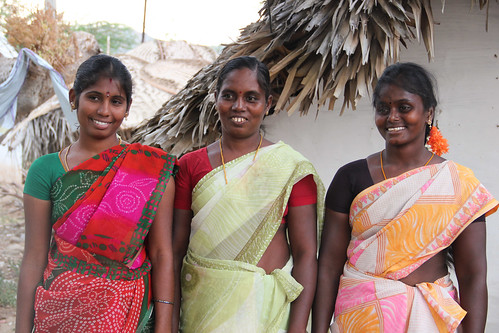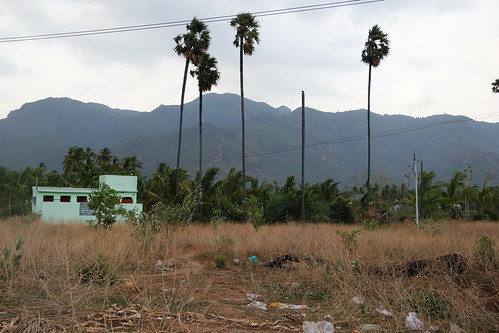
The Swachh Bharat (Gramin) website reports an increase in the total percentage of household toilet constructed from 42.02 percent in 2014 to 56.85 percent as on November 15, 2016. The number of open defecation free villages have also increased from 50,168 in 2015-16 to 1,17,242 villages. From just seven open defecation free districts in 2015-16, the number has risen to 60 with three states--Sikkim, Himachal Pradesh and Kerala--declared completely open defecation free recently.
Though the physical progress seems formidable, questions remain about their acceptance and continued usage. Despite toilet construction progressing rather smoothly across many states, convincing people to start using the toilets has largely been challenging. Media reports are rife with instances of toilets being left unused due to a variety of reasons across the country.
From open defecation to toilet adoption
Despite behavior change communication (BCC) being identified as a crucial component which can make or break the Swachh Bharat Mission (SBM), there remain huge lacunae in the manner in which communications and awareness campaigns run.
Tiruchirappalli-based sanitation promotion organisation Gramalaya has been at the forefront of the issue for almost three decades now. The founder S. Damodaran asserts that the journey from unawareness to adopting a new behavior is rather long as old habits die hard. “Unless the importance of using toilets is properly communicated, people will not use them. Creating basic demand for latrines by listing out the negative impacts of open defecation and highlighting the positives of good personal and community hygiene should be prioritised. No toilets should be constructed before this crucial aspect is taken care of,” insists Damodaran.
 Gramalaya has been employing a combination of the community-led total sanitation principles, where community members are involved in making key decisions, along with a host of time-consuming but effective inter-personal communication strategies. Damodaran rues that the failure of the SBM in convincing people to start using toilets lies in the weak BCC planning which has paid scant attention during the implementation phase with no triggering activities (done to create demand before construction) or follow-ups in many cases.
Gramalaya has been employing a combination of the community-led total sanitation principles, where community members are involved in making key decisions, along with a host of time-consuming but effective inter-personal communication strategies. Damodaran rues that the failure of the SBM in convincing people to start using toilets lies in the weak BCC planning which has paid scant attention during the implementation phase with no triggering activities (done to create demand before construction) or follow-ups in many cases.
No doubt, the SBM has brought about a marked improvement in sanitation awareness, but Sathiyanesan from Leaf Society, a Namakkal-based organisation working to improve sanitation, feels that BCC still lags behind and is not accorded due importance. “Initial toilet use is very critical. If people are not convinced enough, toilets will be built but not used. To ensure that people start using them, the importance of safe and hygienic sanitation needs to be deeply embedded in the minds of people,” mentions Sathiyanesan.
The feverish pace of construction in most village and town panchayats across Tamil Nadu, more often than not, tends to ignore key technicalities, contributing very little in terms of encouraging people to use latrines. Care should be taken while constructing leach pits and placing the pans to ensure the toilets do not smell and are comfortable to use. This, however, is rarely done. In most panchayats, the target-based approach results in construction being outsourced to contractors who tend to maximise profits. Materials of inferior quality are often used, adding to the discomfort.
“The SBM has greatly impaired the role of NGOs in the sanitation sector. Panchayats have a bigger role in the current system and tend to dictate terms. Most construction activities are contracted out and toilets are constructed in bulk, ignoring local needs,” he adds. Leaf Society had partnered with Arghyam and Gramalaya to work in a focused manner in the past to bring about sanitation behavior change in rural Namakkal. Though many panchayats follow their model, it is very hard for them to stick to best practice standards given the enormity of the project.
Fecal sludge management
While the spotlight shines on toilet construction, another major aspect of ensuring overall hygiene and cleanliness that often gets lost in the shadows is fecal sludge management (FSM). With the increase in the number of toilets, treating and disposing fecal sludge from septic tanks has become a mounting challenge for towns and cities.
Faulty septic tank designs have resulted in severe contamination of groundwater in many areas, a fact Sathiyanesan can vouch for. Hundreds of leach pits have been constructed with least regard for safety standards. “Fecal sludge management is still not taken as seriously as it should be,” he rues.
 Leaf Society has been working to improve fecal sludge management in Namakkal municipality and Erumaipatti town panchayat while Gramalaya, with financial help from the Indian Institute of Human Settlements (IIHS), is involved with the Tiruchirapalli corporation to improve FSM in Trichy city. “We are not just focusing on an open defecation free environment, but also an open discharge one,” adds Damodaran.
Leaf Society has been working to improve fecal sludge management in Namakkal municipality and Erumaipatti town panchayat while Gramalaya, with financial help from the Indian Institute of Human Settlements (IIHS), is involved with the Tiruchirapalli corporation to improve FSM in Trichy city. “We are not just focusing on an open defecation free environment, but also an open discharge one,” adds Damodaran.
Welcoming the Swachh Bharat Mission, member, Tamil Nadu Adi Andhra Arunthathiya Maha Sabha working for the welfare of manual scavengers, M. Ravanaiah is quick to point out that manual scavengers have been relegated to insignificance under the mission. In addition to individual household latrines, construction of public and community toilets is also an integral part of the mission. “While people have been made aware of the need to use toilets, especially in crowded urban pockets, maintenance of the structures is highly problematic due to poor infrastructure. Many complexes have no electricity or water supply. And, in the absence of water, even pour flush toilets turn into dry ones where scavengers are forced to clean human excreta by hand,” he adds.
While he agrees that manual scavenging continues and will linger on for years, he hopes better technological interventions will come to the rescue of scavengers pursuing unclean occupations across the country. In addition, families of scavengers benefit very little by way of social welfare schemes instituted by the government for their advantage, Ravanaiah notes.
Managing waste, the EcoSan way
Given the increased demand for safe sanitation and the need for safe disposal methods, ecological sanitation (EcoSan) is becoming increasingly prominent, especially in rural areas. Though EcoSan toilets are inconvenient for some, given its design where you cannot wash in the same pan as it disrupts the composting process, the waste mitigation benefits are abundant.
“Though flush toilets are very popular and convenient to use, we often forget what happens to the excreta as soon as we flush. EcoSan toilets are wholesome in the sense they allow the excreta to decompose, which can later be used as manure for plants. Convincing people to adopt EcoSan has been nothing but grueling, but we have been at it for decades,” mentions M. Subburaman, director of SCOPE, an organisation working to popularise EcoSan toilets. Since eight to 10 litres of water is consumed every time we flush, the requirement of an average family will range between 100 and 120 litres a day.
 The government is slowly taking cognizance of EcoSan’s benefits. People can now avail the SBM subsidy of Rs 12,000 for EcoSan toilets as well, which was not the case earlier. “The cost of constructing these toilets is higher than that of twin-pit variants but lower compared to those connected to septic tanks. Considering the ecological benefits, the government should increase subsidy for those willing to adopt EcoSan toilets,” adds Subburaman.
The government is slowly taking cognizance of EcoSan’s benefits. People can now avail the SBM subsidy of Rs 12,000 for EcoSan toilets as well, which was not the case earlier. “The cost of constructing these toilets is higher than that of twin-pit variants but lower compared to those connected to septic tanks. Considering the ecological benefits, the government should increase subsidy for those willing to adopt EcoSan toilets,” adds Subburaman.
Usage and not numbers must decide swachhta
Despite the steady increase in toilet numbers, open defecation continues. More and more villages are being declared open defecation free, but whether they continue to remain so is rarely monitored.
Both Damodaran and Sathiyanesan agree that the target-based approach is what truly kills sanitation success in India. Behaviour change communication should not be a cloistered activity but should go hand in hand with toilet construction for toilet adoption to be successful.
“Usage should be considered as the key indicator instead of the number of toilets to ascertain the ‘swachh-ness’ of any place. Open defecation free villages and panchayats need to be constantly monitored to ensure they remain ODF. Although this is a tedious process, unless this is done, we can never be sure if toilets are really being used across rural India,” remarks Sathiyanesan.
/articles/world-toilet-day-beyond-bcc